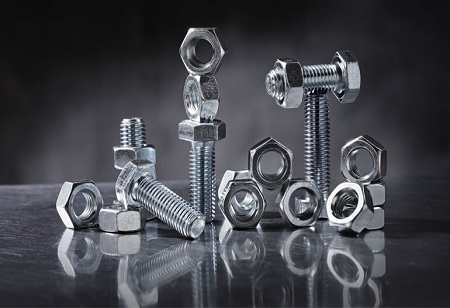People today never realize how drastically
fasteners have changed over time. These transformations are the amalgamation of several factors that include reducing the overall cost of production, and improving the durability of the fasteners. At present, complying with global environmental regulations is a significant reason for these changes. The focus of screw manufacturing has moved from trying to make the strongest fasteners to producing fasteners that are not just durable but also render easy installation & removal. Some of the upcoming trends in fastener manufacturing include:
Multi-functionality
The 1st trend to watch in fastener design is the development of
multi-functional fasteners since these can serve multiple purposes in several places within a product. Therefore, decreasing the number of SKUs you have to deal with, optimizing productivity & speeding up assembly times.
New materials
The
fastener industry has manufactured fasteners using metal & plastic, traditionally. However, fasteners today are manufactured using new materials, and these are shaking up the market. Today there are fasteners that are made from ceramics, special alloys, carbon fiber, & several other composite materials which combine the enhanced strength & hardness with lighter weight. A few new alloys have led to the creation of superconducting fasteners, and fasteners which can withstand extreme heat & pressure.
Improved Corrosion Protection
Since metal fasteners have always been susceptible to rusting, leading to joint failure, fastener manufacturers are now enhancing the corrosion protection that is available in numerous ways. A few of the fasteners are now designed with new geometrical shapes, that are less likely to collect dirt & water which can result in corrosion. And, others are utilizing special coatings that are designed for specific corrosive environments. However, the upshot is that you can now select fasteners which utilize the best corrosion protection for your specific requirements.
Reduced weight
In some of the industries & products, that include automobiles & airplanes, it is highly essential for keeping the overall weight to a minimum. Even a few ounces of excess can have a huge impact on
the performance of the automobile. Therefore, in such situations, it is crucial to utilize ultra-light weight fasteners which can help in decreasing the overall weight of the finished product and this is typically achieved through fasteners that are made using titanium or lightweight polymers.
Security screws
Thieves & vandals can often dismantle as well as steal valuable components by removing screws & other types of fasteners easily hence engineers are taking theft protection into consideration in their product designs. The new kinds of fasteners like the security screws are required to prevent theft & vandalism & to guard against unwanted product tampering.
Miniature Designs
A biggest fastener trends today is the use of miniature fasteners. The shift towards miniature as well as micro fasteners is increasing owing to the surge in compact designs for products at present. There is no room in a tiny product for conventionally-sized fasteners and these products need fastener types as well as styles which are substantially smaller than their traditional counterparts.
Fastener designs which usually take up a minimal amount of space are popular in a number of different applications such as clocks & watches, control panels, medical devices, computers, phones & lighting. Some of these are small enough to fit on the head of a pin and are most often used in the aerospace, automotive, consumer electronics, as well as military industries.
Small screw insertion
The surge in use of miniature fasteners can result in new challenges, specifically with micro screws. The manual installation of these screws leveraging traditional fastening tools is not just time-consuming but also prone to fitting issues owing to insufficient seating torque and this leads to screws which are not firmly fitted, and leading to joints to work loose over time. This issue has resulted in the development of new small screw installation methods & tools and these advancements offer more precise semi-automated/automated small screw insertion.
Surface Mounting
Printed Circuit boards & the other items that are made using fragile materials can be damaged when conventional kinds of fasteners are applied. Therefore, in order to protect against damage from rough handling, manufacturers have now started introducing fasteners with surface mounting capabilities particularly for use with PCBs. In many instances, fasteners are available in self-contained packages which can be soldered directly onto the surface of circuit boards.
Installation during stamping
A recent advancement in fastening design is the ability of installing fasteners during the stamping process. While newly developed systems work in tandem with the stamping press for both feeding & installing the fasteners, it eliminates the requirement for secondary installation operations.
The road ahead
Across the board, several industries have raised the bar for miniaturization, and are working aggressively for making their products smaller, facilitating fastener manufacturers in developing correspondingly smaller fasteners. Several new products are in the process of utilizing thin as well as ultra-thin metal sheets that are in need of miniature clinch fasteners as strong, permanent as well as reusable threaded solutions.
